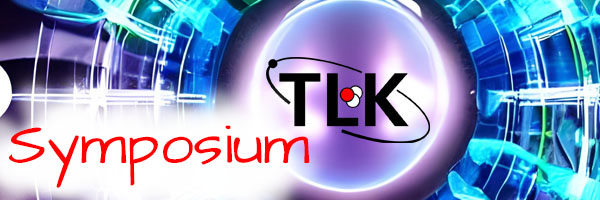Speaker
Description
Tests of molecular quantum electrodynamics in the hydrogen benchmark species have predominantly targeted stable isotopes such as H2, HD, and D2. Accurate dissociation energy measurements [1] have shown remarkable agreement with theoretical predictions [2,3]. While various cavity-enhanced techniques have been employed to measure vibrational splittings, particularly in HD [4,5], these endeavors have encountered challenges due to dispersive line shapes with multiple interpretations [6,7], restricting the precision of determining molecular vibrational level splittings. However, comparisons of numerous P and R lines have enabled the determination of highly accurate rotational level splittings [7].
Incorporating tritium-containing isotopologues in QED tests of hydrogen species provides new perspectives and deepens our understanding of these systems. Coherent Anti-Stokes Raman spectroscopy (CARS) has recently been utilized to measure vibrational splitting in T2, HT, and DT [8], albeit with an accuracy limited to a few MHz. We aim to significantly enhance the accuracy by employing our developed NICE-OHMS technology to measure the HT overtone spectrum. We have developed a specialized setup for HT spectroscopy under radiation safety conditions. Loading and handling the HT gas is done by employing an non-evaporable getter. We present the newest results from this nowel setup.
[1] C. Cheng, J. Hussels, M. Niu, H.L. Bethlem, K.S.E. Eikema, E.J. Salumbides, W. Ubachs, M. Beyer, N. Hoelsch, J.A. Agner, F. Merkt, L.G. Tao, S.M. Hu, C. Jungen, PRL 121, 013001 (2018)
[2] J. Komasa, M. Puchalski, P. Czachorowski, G. Lach, K. Pachucki, Phys. Rev. A 100, 032519 (2019).
[3] M. Puchalski, J. Komasa, A. Spyszkiewicz, and K. Pachucki, Phys. Rev. A 100, 020503(R) (2019).
[4] F.M.J. Cozijn, P. Dupre, E.J. Salumbides, K.S.E. Eikema, W. Ubachs. PRL 120, 153002 (2018).
[5] L.G. Tao, A.W. Liu, K. Pachucki, J. Komasa, Y.R. Sun, J. Wang, S.-M. Hu, PRL 120, 153001 (2018).
[6] Y.N. Lv, A.W. Liu, Y. Tan, C.L. Hu, T.P. Hua, X.B. Zou, Y.R. Sun, C.L. Zou, G.C. Guo, S.M. Hu, PRL 129, 163201 (2022).
[7] M.L. Diouf, F.M.J. Cozijn, V. Hermann, E.J. Salumbides, M. Schloesser, W. Ubachs, Phys. Rev. A 105, 062823 (2022).
[8] K.F. Lai, V. Hermann, T.M. Trivikram, M.L. Diouf, M. Schloesser, W. Ubachs, E.J. Salumbides, Phys. Chem. Chem. Phys. 22, 8973-8987 (2020).

